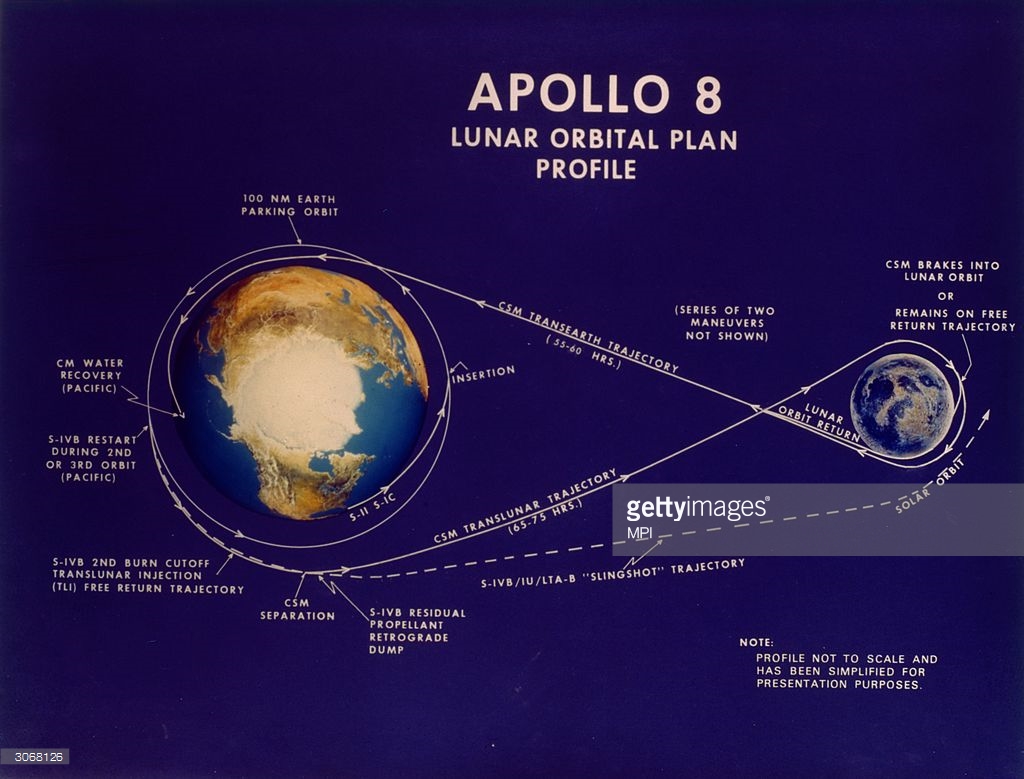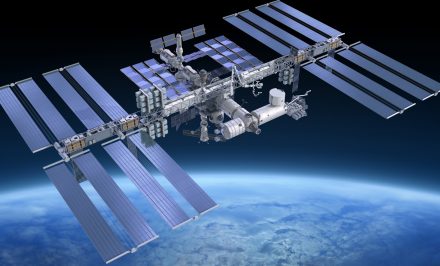SpaceX is going to the moon. In 2018, Elon Musks enterprise wants to be the first private company to not only put people in space, but also to take them beyond low Earth orbit (LEO) for the first time in 45 years. The plans are very exciting, but there’s still a lot of work to be done before the mission will take off.
When SpaceX says it’s “going back to the moon”, it doesn’t mean quite something similar to the Apollo-missions (at least the landing-missions from Apollo 11 and up). The main difference is this will simply be a fly-by, similar to Apollo 8. SpaceX says it was approached by ‘two individuals’ that are willing to pay a ‘significant sum’ (of which they have already laid down a pretty big deposit). The company won’t disclose who the two customers are.
The duo, whoever they are, will slingshot around the moon, see the dark side of the moon before flying back to Earth. The whole trip will take some 8 days, according to SpaceX.
2, or 3 astronauts?
The flight will take place in the new Dragon V2-capsule that SpaceX is currently developing for NASA, who wants to use the spacecraft to send astronauts to the International Space Station starting next year. While SpaceX says it’s just the two buyers that will fly to the moon, but it’s not unthinkable that there will be an extra, professionally trained astronaut present on the trip. That’ll be easy with the Dragon V2 which is designed to carry 7 passengers.
Scepticism about deadline
The flight would leave in 2018 which is pretty fast – though critics are sceptical about the proposed launch date. SpaceX has a history of flightdelays, like the Falcon Heavy-launch which is still in development to this day. That’s the same Falcon Heavy that is supposed to actually launch the astronauts…
Competition with NASA
If, by some miracle, SpaceX does meet it incredibly ambitious deadline, it will be a fierce competitor for NASA. The American space agency is currently building its own Space Launch System-rocket and Orion-spacecraft, a massive undertaking meant to give America an independent way to launch its own astronauts. However, NASA’s current strategy is to focus not only on SLS/Orion for deep-space-exploration, but also on a privacy/public partnership with companies such as SpaceX which would take over duties in low Earth orbit (like ferrying astronauts to and from the ISS). But now, SpaceX is beating NASA at its own game by independently flying beyond LEO – something NASA only begrudgingly accepts.
You might also like: ‘Space Launch System: America’s ‘rocket to nowhere’.
Exciting mission
It’s certainly an exciting prospect of a mission, which will be the first time any human will leave low Earth orbit since 1972, the last time men set foot on the moon. It’s also one of the very few times that tourists have been in space, though a few others have preceded this duo. It is, however, the first time tourists will fly on a commercially developed spacecraft.
A history of Space tourism
Space tourism is a relatively new industry, one which does exist but is overall in its infancy. Several companies are currently working on initiatives to launch tourists into space, like Virgin Galactic or Blue Origin which offer short trips just over the Karman-line. These are really not comparable to what SpaceX is now offering, though they are significantly cheaper.
There’s another form of space tourism, which goes a lot farther than what any others are offering. For a measly 40 million euros, you can visit the International Space Station for about a week – though you’ll have to work hard with your fellow astronauts to maintain the space station and do extensive research.
You might also like: ‘Is there a future for commercial space tourism?
Lot of work
SpaceX is pretty confident in saying the trip will happen in 2018, but the company is still a far way off of realizing the trip. There are a few obvious things the company still needs to address to meet the deadline.
Falcon Heavy
The most obvious one is SpaceX famed theoretical rocket, the Falcon Heavy. Whoever the lucky duo is that’s going on the trip, they’ll leave on the predecessor of the Falcon 9 carrying the Dragon capsule. The Falcon Heavy is supposed to be 3 times as big and has even more propulsion power, and its one of the most anticipated launches in rocketry. But, awesome as that may sound, the Falcon Heavy is far from ready to fly. Worse yet, SpaceX has been working on the massive rocket for years, postponing the maiden flight since as early as 2015. The earliest predicted launch for the beast is now at the end of 2017.
New Dragon-capsule
The Dragon V2-capsule is another point that needs addressing. At the moment, SpaceX is hard at work to build the manned version of its Dragon-spacecraft. It’s important to note that SpaceX doesn’t really do this of its own accord, but rather gets a huge amount of funding from NASA to develop the spacecraft. That happens under the Commercial Crew Program that was set up to incentivize commercial companies to develop their own spacecraft for launching astronauts. That’s not just the space agency’s goodwill, but a more than necessary step into America’s independence from using Russian Soyuz-rockets. NASA gave a similar deal to Boeing to develop the CST-100 spacecraft. Starting in 2018, both companies aim to send astronauts to the International Space Station.
Awkward relationship
That means the development of the Dragon V2-spacecraft is primarily funded by NASA, and that puts SpaceX in a little bit of an awkward position. It means the company has to follow NASA’s schedule for development, it has to comply to NASA’s (and the FAA’s) strict regulations, and it has to keep up with NASA’s roster.
That’s why SpaceX has hinted that despite whatever deposit the two new customers have put down, NASA will get priority over the Dragon V2’s maiden flight.
Not done by a long shot
A more pressing issue with the Dragon V2 however isn’t SpaceX’ dependence on NASA, but rather the fact that it isn’t done yet. The company revealed a prototype in 2014, and has been working on the capsule steadily ever since. It tested a launch escape system and it’s passed qualifications on its Draco-engines, but there’s still quite a long way to go. The capsule has never even flown into space – let alone in cislunar space (though to be fair, SpaceX does develop the Dragon V2 with cislunar spacetravel in mind). It’s a fair question to ask if SpaceX will have the Dragon V2 ready in time for the trip.
You might also like: ‘SpaceX presents manned space-capsule Dragon V2’.
No timeline on the spacesuit
The Falcon Heavy and the Dragon V2 are two aspects of the trip that SpaceX is actively working on and which has, to SpaceX’ credit, made quite a bit of progress over the years. However, on the subject of the necessary spacesuits the company has been eerily quiet. To plan a manned mission, the company will need spacesuits for its astronauts, and there’s been almost no word on how and when these are to be build.
Specific builds
You can’t just use any existing spacesuit at this moment. The current spacesuits in existence are specifically tailored to the aircraft that they’re meant to be used in, like the Russian Sokol-suits that are used during Soyuz-launches. SpaceX can’t just use or even modify an existing spacesuit, but has to built one from scratch. And the company hasn’t even begun doing this. Is it going to take 2 years to design, build and test one? Maybe the company makes the schedule – but most likely it won’t.
It remains to be seen if SpaceX will meet its ambitious schedule, but maybe that’s not such a bad thing. Elon Musk has always set impossible deadlines that aren’t met, but is always following the general course of the company
Tags : .space, Commercial Crew Program, commercial space flight, Dragon, dragon v2, Elon Musk, Falcon 9, Falcon Heavy, moon, nasa, ruimtevaart, spaceflight, SpaceX





